A Tribute to the Speedmaster First Omega in Space, Now Discontinued
One of the greatest Speedies is gone... Goodbye FOiS
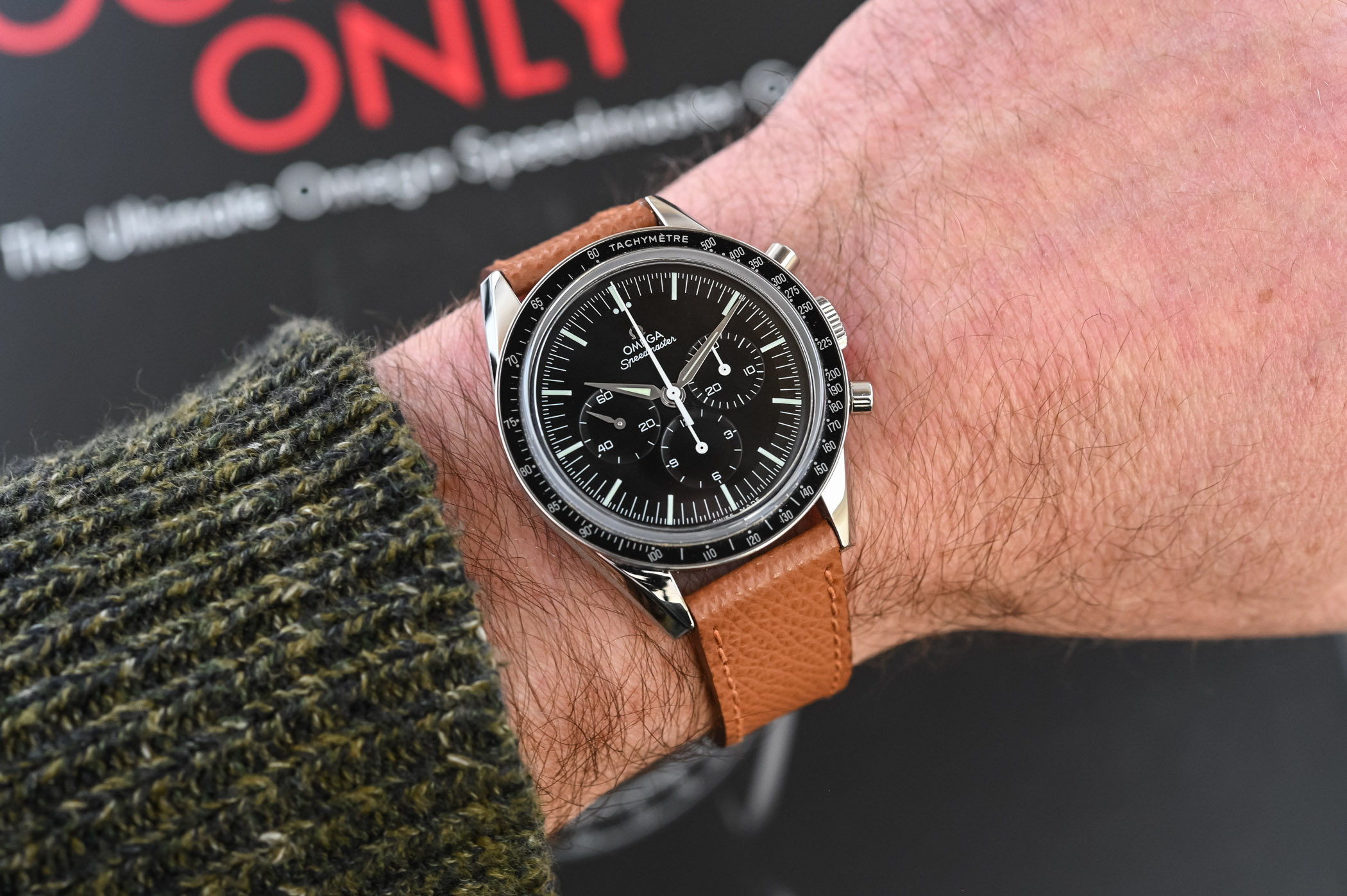
While in 2021 vintage-inspired watches are all over the place, in 2012 the situation was slightly different. There were some homage or revival watches already, but the trend was less obvious. Specifically, if you were in the market for a Speedmaster with retro-styling, the main option was the all-time classic, the Moonwatch Professional (which has just been updated). Despite countless limited editions, most of them were relatively modern, and a proper vintage re-edition had yet to be launched. This came in 2012, with the introduction of the Omega Speedmaster First Omega in Space, a quite faithful take on the CK2998, as indicated by its name, the first Omega to be worn in Space, on the wrist of Wally Schirra. This numbered, non-limited edition was and still is a very attractive model… but Omega has decided to give an end to its career. And that’s why we’ve decided to pay tribute to one of the coolest Speedmaster editions.
the First Omega in Space
The links between Omega and space exploration started actually before the tests done by NASA on the Speedmaster and its qualification as the official watch of astronauts – which happened in 1965. Indeed, most early astronauts were test pilots and they knew the need to have a timekeeping instrument while flying. Gagarin, the first man in space (April 1961), already had a watch around his wrist. The same happened with American astronauts who, way before NASA supplied them with a flight-qualified timepiece, already wore watches in Space.
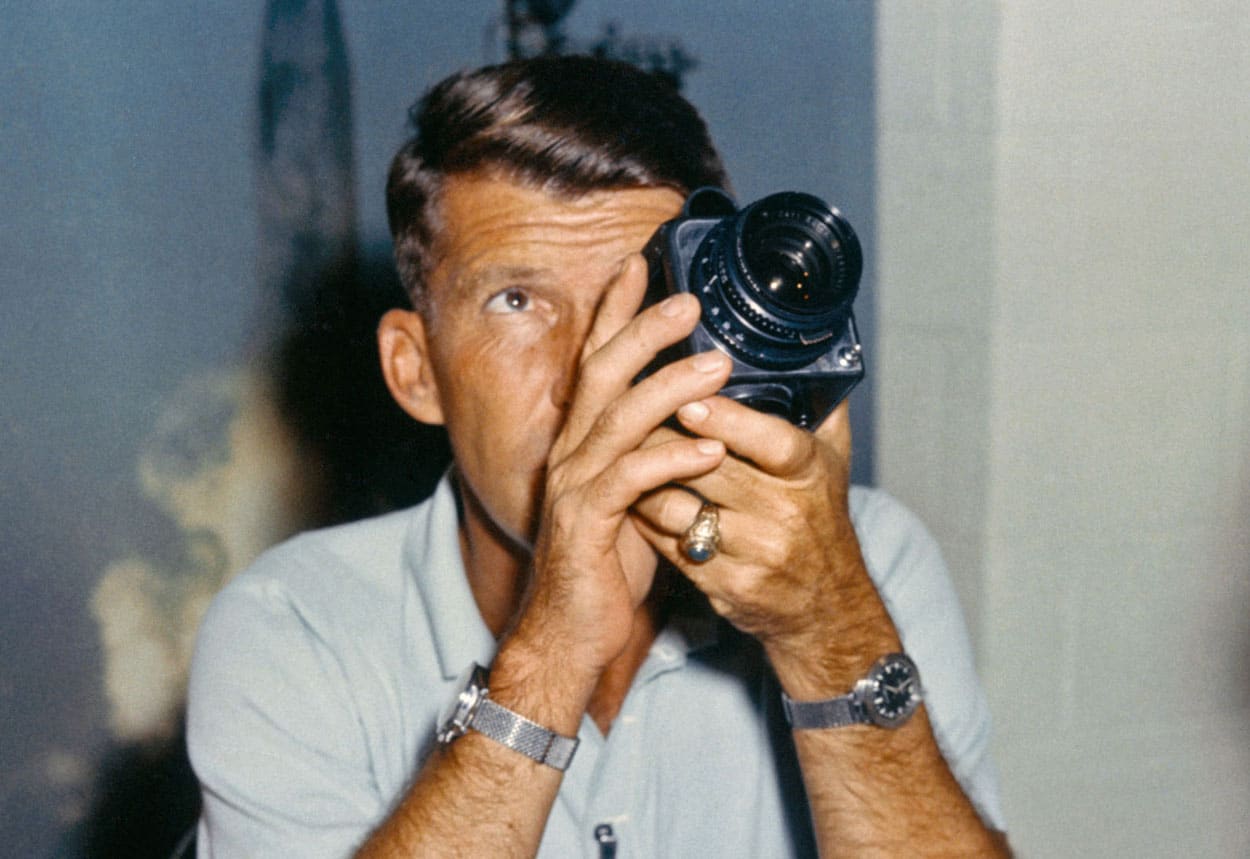
As for an Omega wristwatch, the story goes back to October 3, 1962, and the Mercury-Atlas 8 mission. It was the fifth United States crewed space mission, part of NASA’s Mercury program. Astronaut Walter “Wally” Schirra orbited the Earth six times in the Sigma 7 spacecraft, during a nine-hour flight. And while this was the longest US crewed orbital flight yet achieved, as far as we’re concerned here, this mission will remain historically-important because it was the first time a Speedmaster went into Space. Below, multiple images of Wally Schirra wearing the Speedmaster during test procedures (all images by NASA).
The story behind this watch is simple; it was Wally’s personal watch, bought privately. The watch in question is a second-generation Speedmaster, a reference CK2998-4 to be precise. Schirra wasn’t the only astronaut to use a privately-owned Speedmaster in Space. So did Gordon Cooper, also with a CK2998.
The inspiration, the Speedmaster CK2998
When Omega decided to create a re-edition of the first Speedmaster ever to travel into space, there was no debate, it had to be directly inspired by the CK2998 worn by Schirra. What’s special about this version of the Speedy…?
The Speedmaster CK2998 is the second generation of this watch, with subtle evolutions compared to the inaugural CK2915 model. While sharing the same symmetrical case with straight lugs and the same movement – calibre 321 – the CK2998 differs mostly regarding its bezel and its hands. While the first generation Speedmaster was fitted with a steel bezel and an engraved tachymeter scale, the CK2998 introduced the black anodized aluminium bezel that will be the norm for all following references (still in use in 2021). The earliest models featured a “base 1000” tachymeter scale while the CK2998-4 worn by Schirra came with a “base 500” scale, as seen in the photos here.
The other noticeable feature of the CK2998, which was found only in this generation, was the distinctive set of hands. Replacing the metallic broad arrow hands of the CK2915, and prior to the introduction of the white “professional” baton hands, the CK2998 was fitted with so-called “Alpha” metallic hands. Its dial, as most early Speedmasters, was matte black and stepped, featuring an applied Ω logo at 12 o’clock and tall markers. Of course, the “professional” mention wasn’t yet existing.
The 2012 Speedmaster First Omega in Space
Let’s take a look back at the state of the Speedmaster collection prior to the introduction of the First Omega in Space (also known as FOiS). As surprising as it may be, and while the Speedmaster was already a huge commercial success, with dozens of limited or commemorative editions, until 2012 the most “vintage-inspired” Speedmaster Moonwatch you could get was the 1957 Replica “Broad Arrow” watch, under the reference 3594.50 – a watch that was only an evocation of the first Speedmaster, with a classic asymmetrical “professional” case. Historic references were visible on the steel bezel, the Broad Arrow hands, the Alpha subsidiary hands, and the applied logo. A nice watch for sure, yet without being entirely faithful to the original 1957 model. And still, this watch had been produced only from 1998 to 2003. So, in early 2012, the closest you could get from a historical Speedmaster was the basic model, the Moonwatch Professional 3750.50.
Yet, Omega knew that the trend for vintage-inspired watches was growing fast and that the demand for a faithful re-edition of a historical Speedmaster was high. The brand’s answer came at Baselworld 2012, as a celebration of the 50th anniversary of the 1962 Mercury-Alpha 8 mission. Launched under the name Speedmaster “First Omega in Space,” the recipe was an unprecedented model, with a new case, a new dial, and retro styling. A simple recipe for sure, but an effective one.
What truly sets the Speedmaster First Omega in Space apart from the rest of the collection is first and foremost its case. From late 1964 to the day the FOiS was launched, the Speedmaster Moonwatch was only known in its “Professional” version, as Omega adopted the twisted lugs and the asymmetrical architecture of the case, with protected crown and pushers. However, as we’ve seen above, the CK2998 model was equipped with a different case, the so-called “straight” case with symmetrical architecture. As a re-edition of this specific reference, the FOiS brought back for the first time the early straight lugs design, something that made some noise back in 2012.
The Speedmaster First Omega in Space was quite faithful to the CK2998, reproducing its measurements too. The case measured 39.7mm in diameter, the exact same dimension as used in 1962. In addition to the non-protected crown and pushers, with flat casebands, the brand also reproduced the polished bevel on top of the lugs. The case is finished with a combination of polished and brushed surfaces and, a concession to modernity, is protected by a sapphire crystal – a Hesalite would have definitely been more accurate in this vintage-inspired context…
This sharper, more compact, and more angular design makes for most of the First Omega in Space’s appeal. Distinctive, fairly different from a Professional Speedmaster, faithful to the original Schirra watch, it rather drastically changes the look of the watch. The case retains however its thickness (about 14mm) and, an important thing to mention, despite the smaller diameter, the lug-to-lug dimension is about the same as a 42mm Professional model. However, this FOiS has an undeniable charm and old-school elegance that the Professional doesn’t have.
In order to stay faithful to the CK2998, Omega fitted the FOiS with a black anodized aluminium bezel with a “base 500” tachymeter scale. However, some of the details that seem today important, namely the historical “dot over 90” and “dot diagonal 70”, are not present here and the bezel simply sticks to the layout used in contemporary Moonwatch Professional. This means, in this context, a bezel with “dot beneath 70” but with vintage “tachymètre” inscription. Omega also gave this model historically-inspired pushers and crown.
The other major update concerning the Omega Speedmaster First Omega in Space is its dial. It actually is fairly different from that of a Professional Moonwatch, yet not entirely faithful to the CK2998. Indeed, Omega retained a so-called flat dial, without the usual step found on the periphery of vintage dials. This model however comes with several distinctive features. First, the chronograph track has 3 divisions per second (instead of 5 on the Professional, which is inaccurate). Second, it comes with tall hour markers. Finally, it gets rid of the Professional mention, receives vintage-styled Omega and Speedmaster inscriptions and the Ω logo is a metallic applique, faithful to the original watch.
The other important feature, something that really sets this FOiS apart, is the set of hands. In order to bring back the flair of the CK2998, Omega gave this edition so-called “Alpha” hands, with a polished metal finish. The white, straight and non-luminous central chronograph hand is also faithful to the CK2998. The subsidiary hands are, on the other hand, more of a mystery. Certainly, the combination of a polished Alpha small seconds and white baton hands for the chronograph counters is appealing and has a vintage charm, but it doesn’t refer to any vintage reference. Indeed, CK2998 watches either featured 3 white Alpha subsidiary hands or a classic set of white batons (which was the case for Schirra’s watch). Let’s assume here a deliberate choice from Omega’s designers.
Turning the watch over and you’ll discover an unprecedented caseback. While a CK2998 features a double-step caseback with an engraved seahorse logo, the Speedmaster First Omega in Space was fitted with its own, unique caseback. It has a single step and the center is embossed with a seahorse in relief. The caseback reads “THE FIRST OMEGA IN SPACE” and “OCTOBER 3, 1962” as a reference to Wally Schirra’s flight. The mention “numbered edition” sits next to the unique number of the watch.
Inside the case, no surprises, as Omega equipped the FOiS with its loyal hand-wound chronograph movement, the rhodium-plated calibre 1861 – which is the same movement as found in contemporary Moonwatch Professional watches. This cam-operated chronograph movement features 18 jewels, beats at 21,600 vibrations/hour, and stores up to 48 hours of power reserve.
The Speedmaster First Omega in Space was only available on a leather strap – no steel bracelet option. It was fitted on a 19mm dark brown calfskin strap with off-white stitchings and a steel pin buckle. Being the personal watch of our founder Frank, it is here photographed on a strap of his choice, a grained calfskin strap in cognac with our signature light blue lining, which is available in our webshop here. The watch was delivered in a luxurious wooden box.
Production of the First Omega in Space, now discontinued
The Omega Speedmaster First Omega in Space was available under the reference 311.32.40.30.01.001 and produced from 2012 until late 2020. Indeed, Omega has decided to stop its production a few weeks ago. While Omega doesn’t disclose the official number of watches produced, we can assume (looking at watches for sale on the second-hand market with 2020 production date) that about 15,000 to 16,000 Speedmaster FOiS have left the Biel-based manufacture.
Why Omega took the decision to discontinue the First Omega in Space? There are, to me, two reasons for this move. First of all, this coincides with the introduction of the new Speedmaster Moonwatch Professional, equipped with the new calibre 3861 Co-Axial Master Chronometer. Omega’s strategy is simply to stop the production of the older calibre 1861, and the brand couldn’t justify continuing to produce this movement only for the FOiS, a relatively low-production model. As such, there were two options; replacing the movement of the FOiS with the new 3861, or stopping its production once and for all.
This leads us to the second reason. The FOiS is, in my eyes, a very cool watch but has never been a huge commercial success. A 15,000-piece production run is low for Omega, especially over 8 years. This doesn’t even match with one year of production of the Moonwatch. In addition to that, the “vintage re-edition” trend has dramatically grown over the years and the market for historically-oriented watches has changed. Collectors are now far more demanding and the exactitude of the watch is key. For instance, the new Speedmaster Moonwatch Professional has been updated with multiple vintage references. Also, and while playing in a completely different price range, Omega has now another symmetrical Speedmaster, the Moonwatch Calibre 321, which is extremely faithful to its vintage inspiration. With this in mind, some of the inaccurate vintage elements of the Speedmaster FOiS became more obvious. This niche model, targetting more seasoned collectors who might have strong knowledge about the Speedmaster, could have become less relevant. But this is my personal take on the situation.
Should You get one? and how to do it?
Having read the paragraph above, you might imagine that I don’t like the FOiS. Wrong. I actually think this is one of the best modern Speedmaster models. Sure, it isn’t as perfect as the Moonwatch Calibre 321. But it is also far more accessible. What makes it such a cool model is the fact that it is the simplest way to get a symmetrical Speedmaster. The straight case is just completely different from what you’ll get with a Professional model. More elegant, more old-fashioned, more compact and typically a watch that you’ll pair with a beautiful leather strap, making it a more formal option. Sure, it looks like a Speedmaster but it also offers a drastically different feeling on the wrist. And while the Professional is a true instrument watch, the Speedmaster FOiS isn’t. And that makes it unique and desirable. Should you get one? If you love Speedmasters, definitely, even if you already own a classic Moonwatch Professional.
How to get one in January 2021? First of all, a visit to your local Omega boutique or official retailer could be a good idea. They might still have one in stock. The retail price for the Speedmaster First Omega in Space was EUR 4,700 in late 2020, making it the most accessible new Speedmaster you could get – the new generation starts at EUR 5,900. Second, if the FOiS isn’t the Speedmaster with the largest production numbers, it isn’t a confidential model either. This means that there are multiple watches for sale on second-hand websites. Regarding the price, the market somehow reacted to the announcement of the discontinuation. As a result, prices appear to be on the rise. But you can still find some examples below retail price. And considering the beauty and overall quality of this watch, it remains a very good idea, if you ask me.
More details about the Omega Speedmaster First Omega in Space at the dedicated page at omegawatches.com.







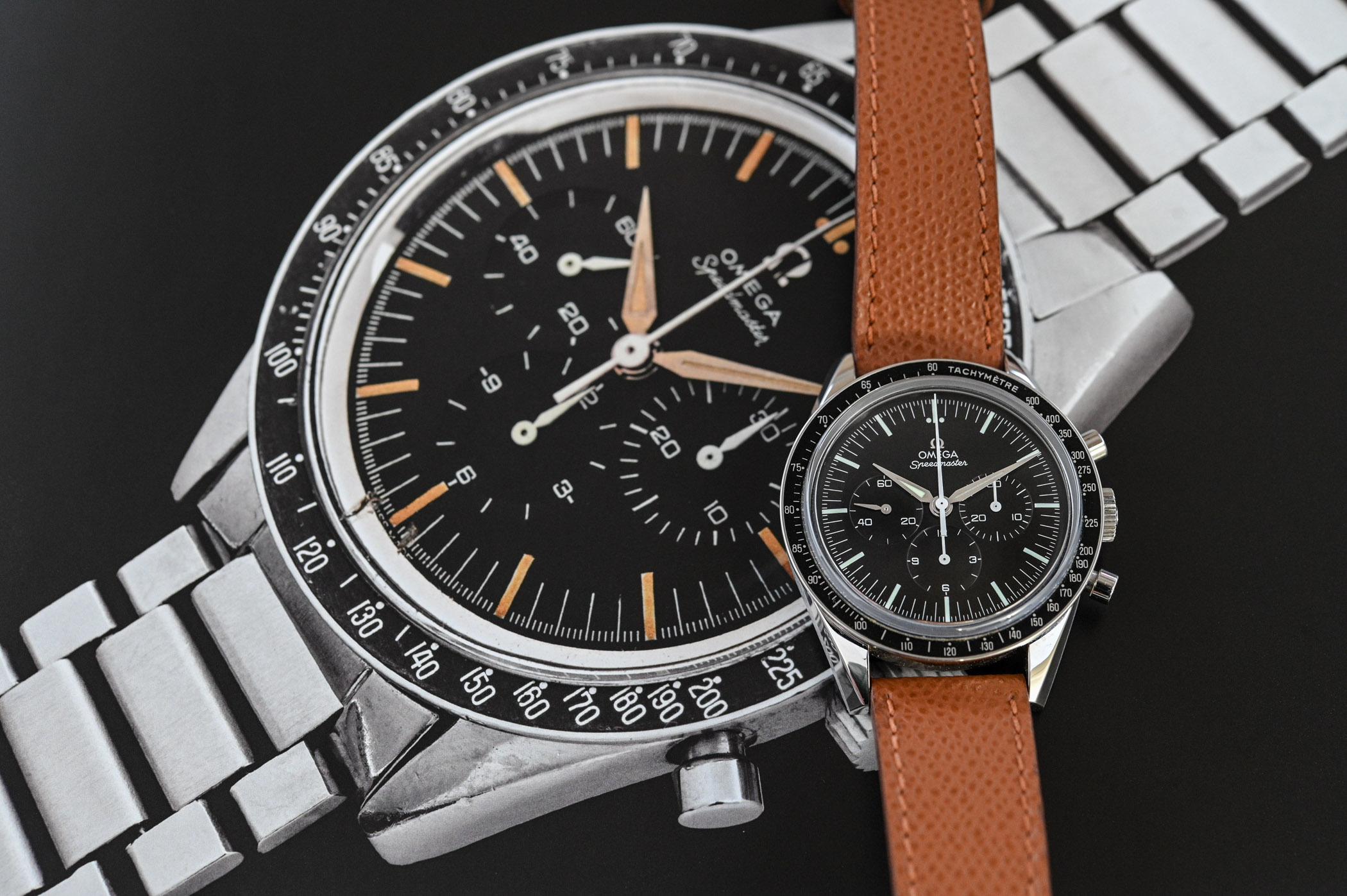
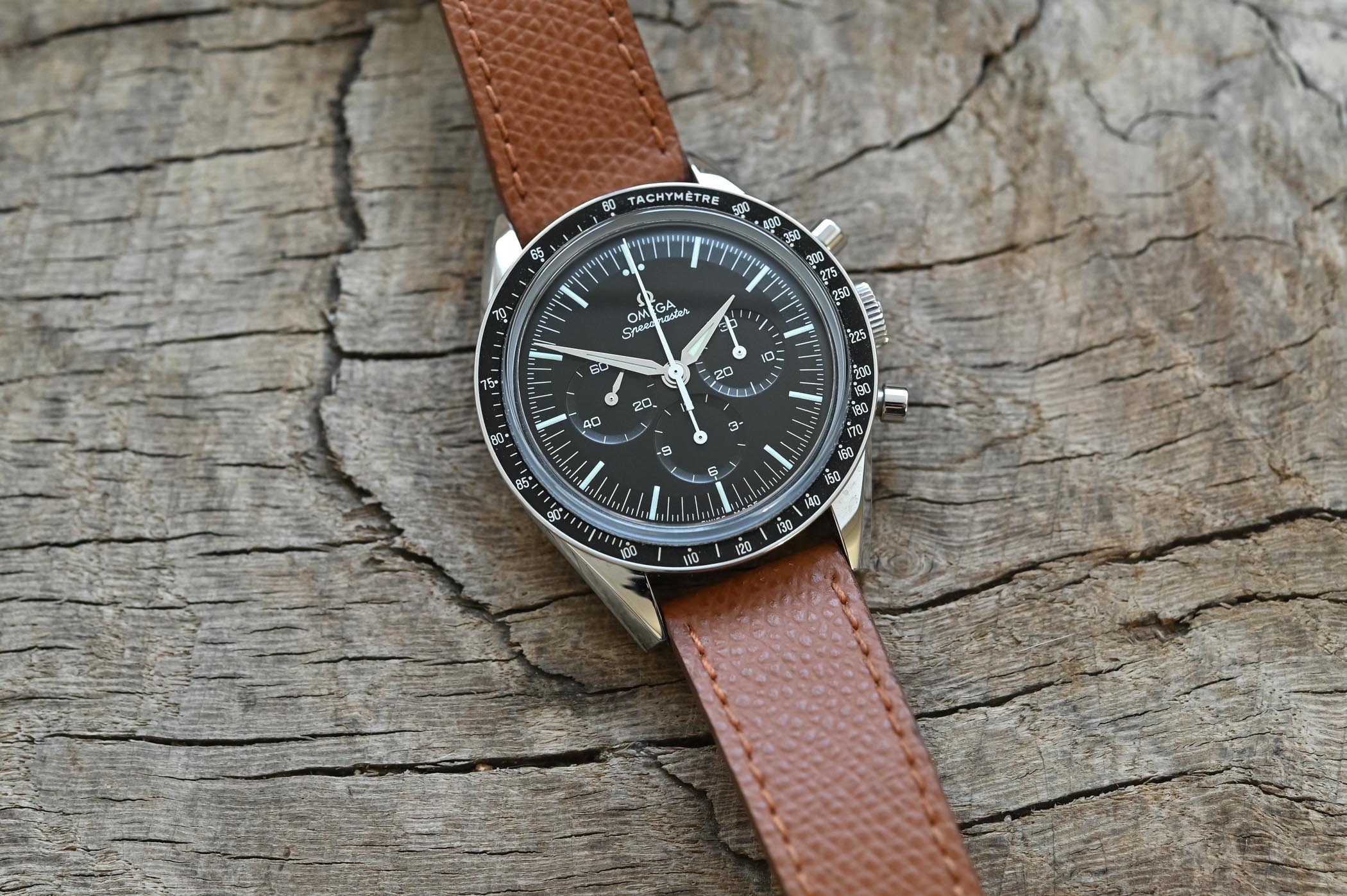
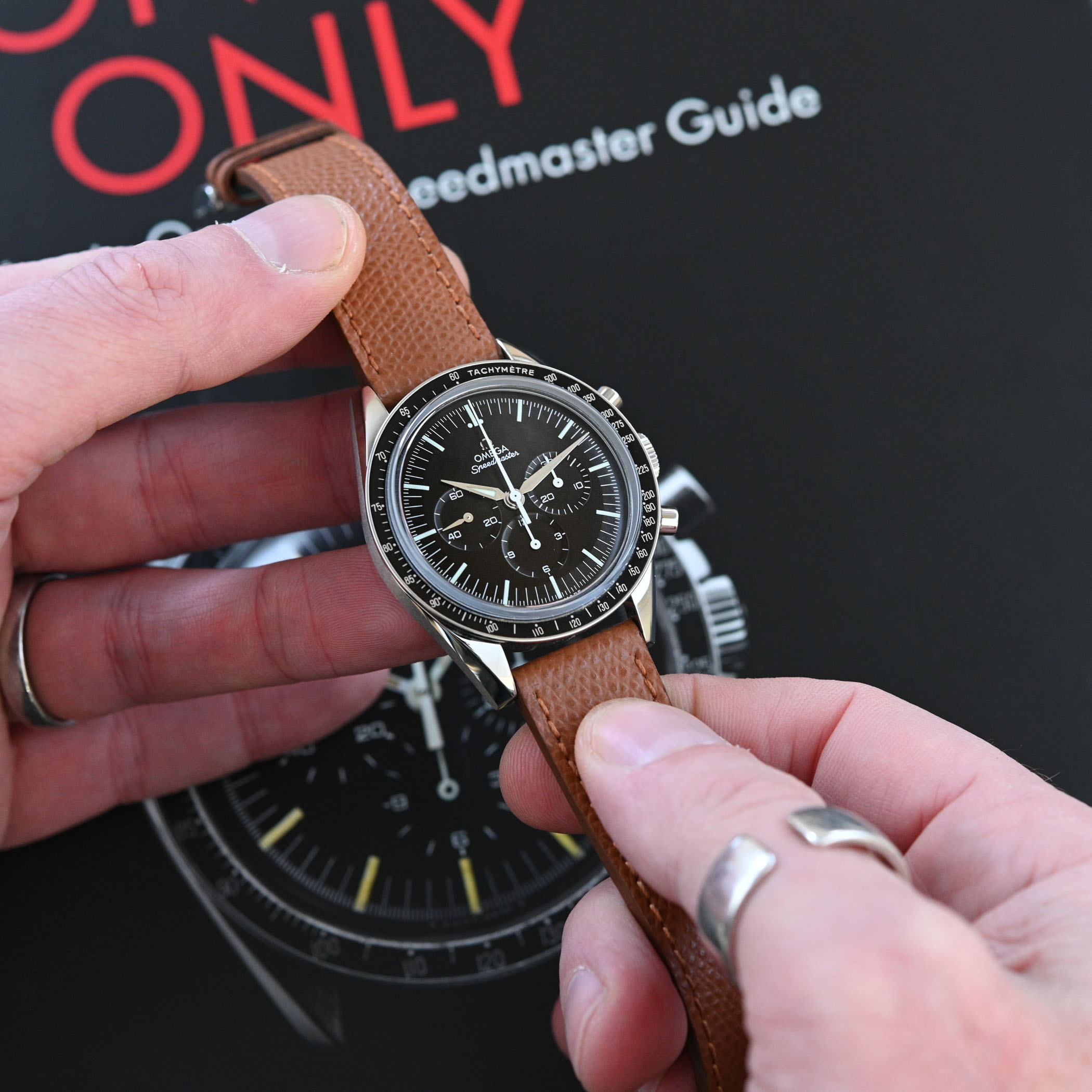

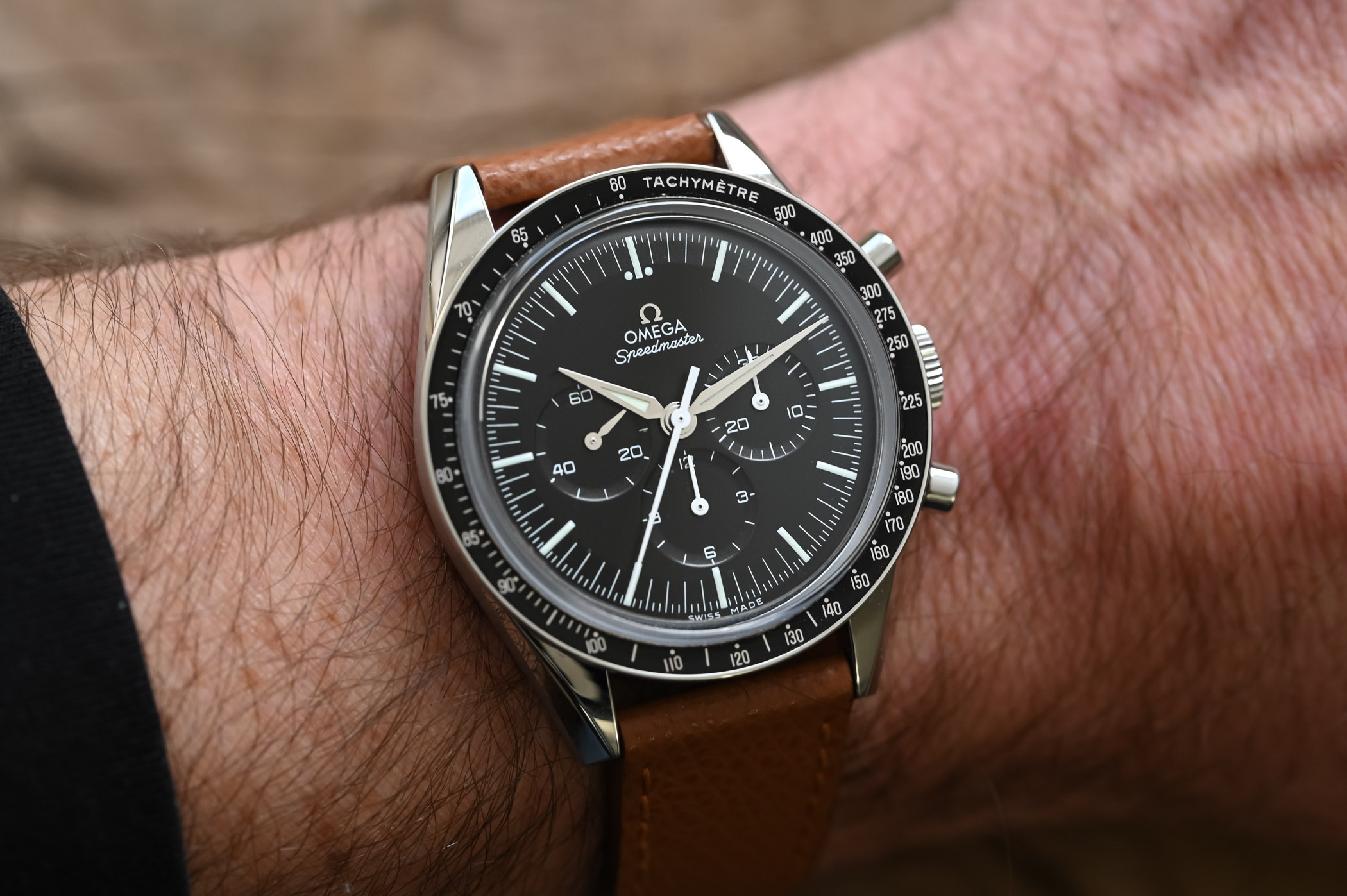

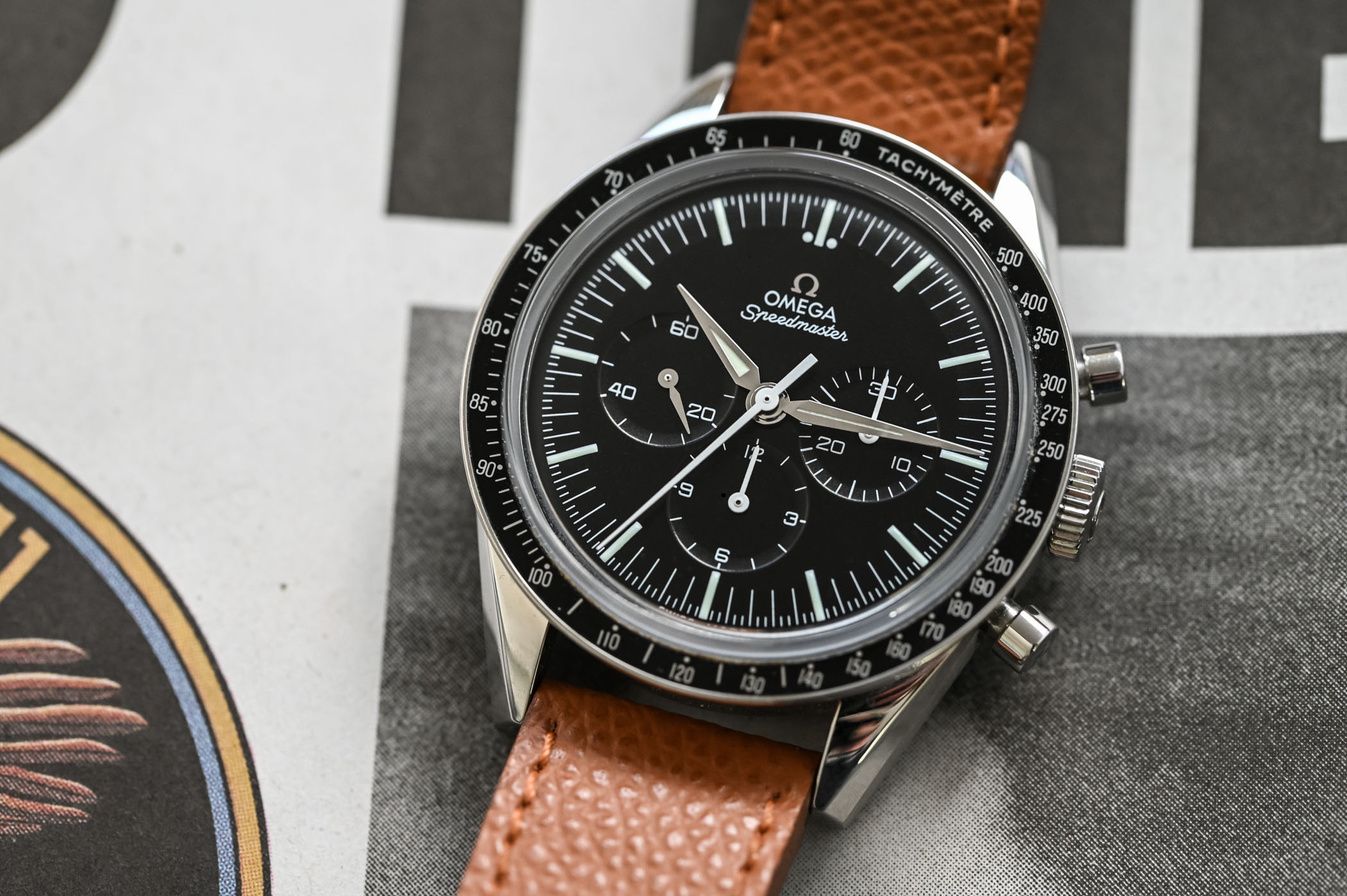

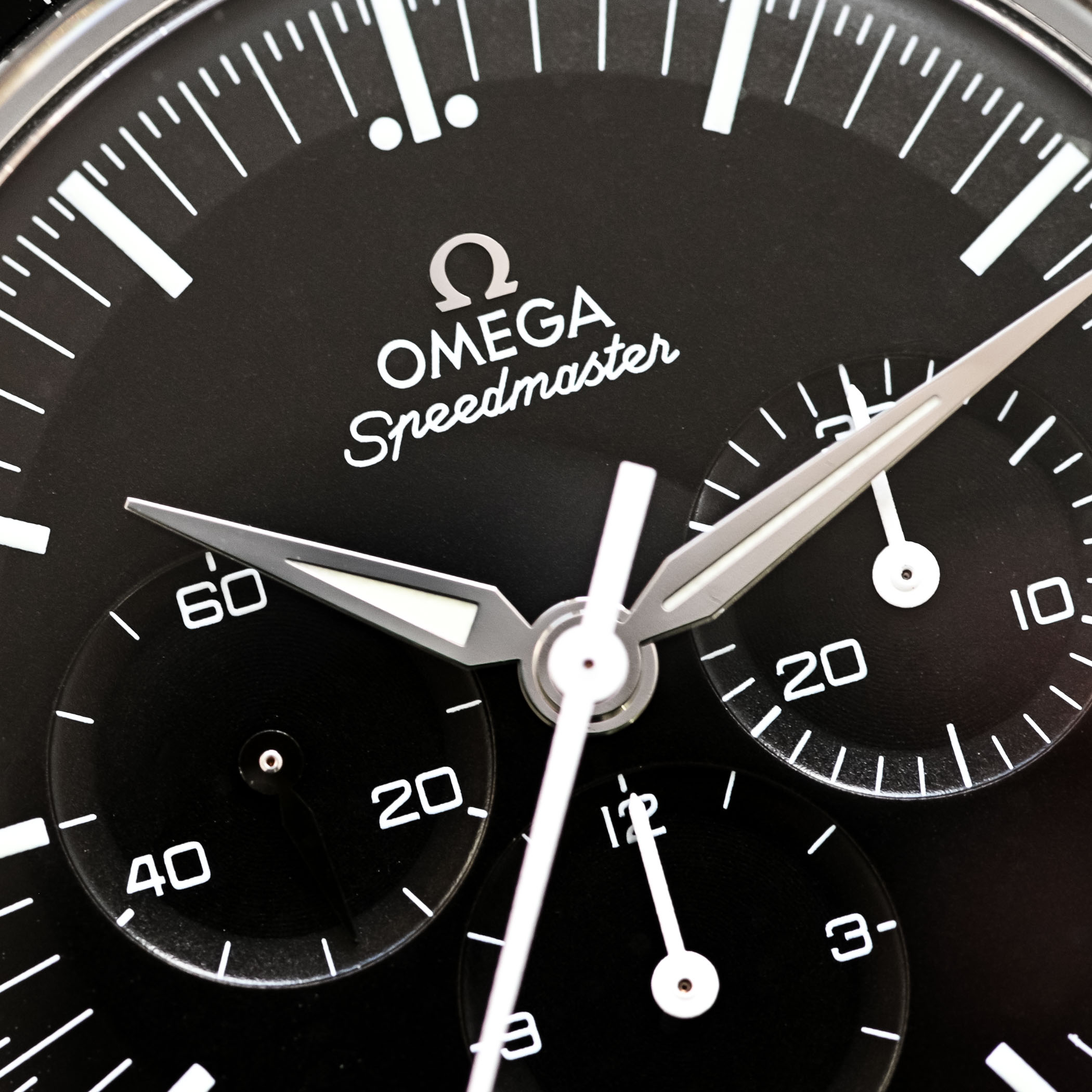

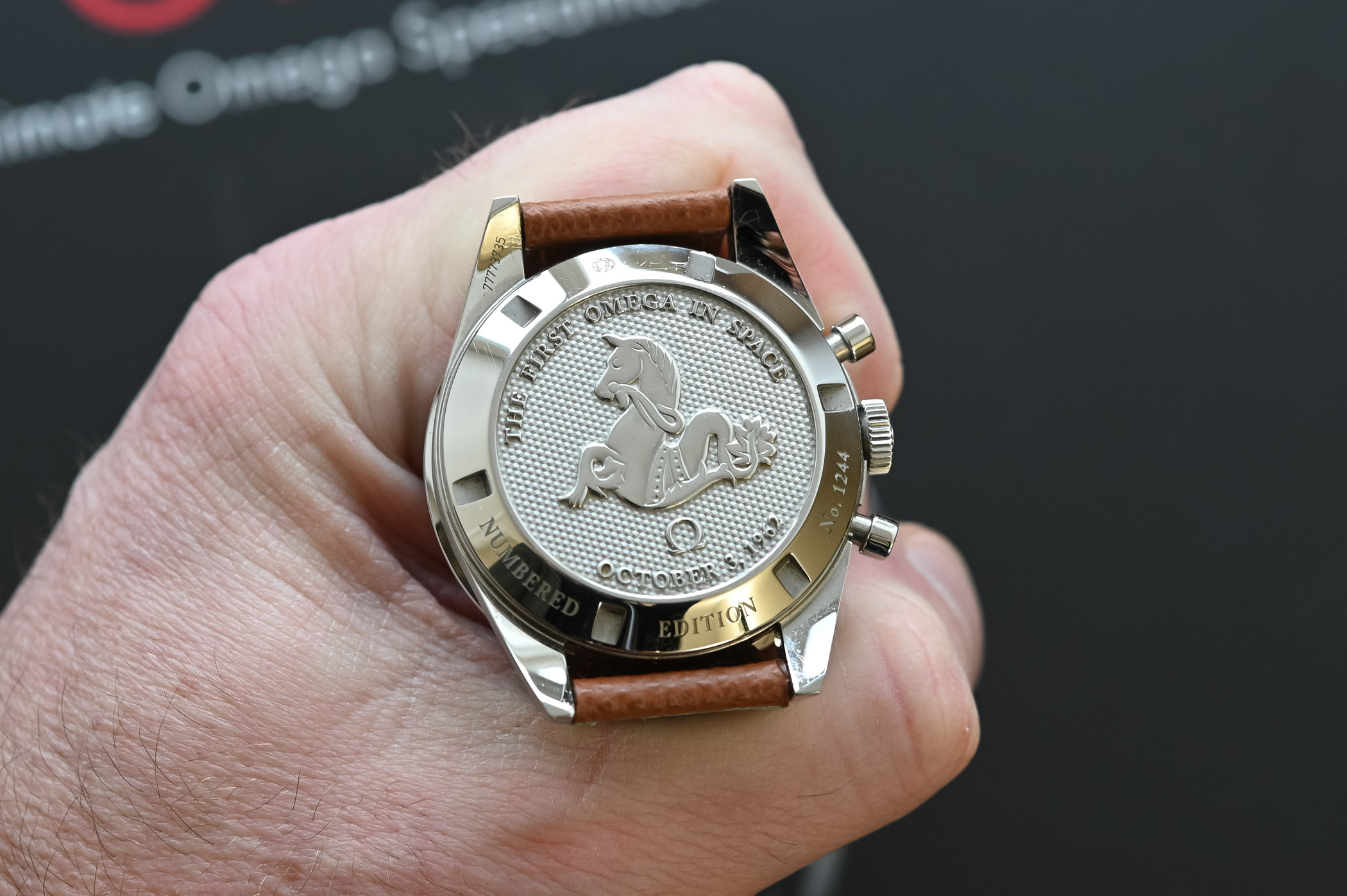


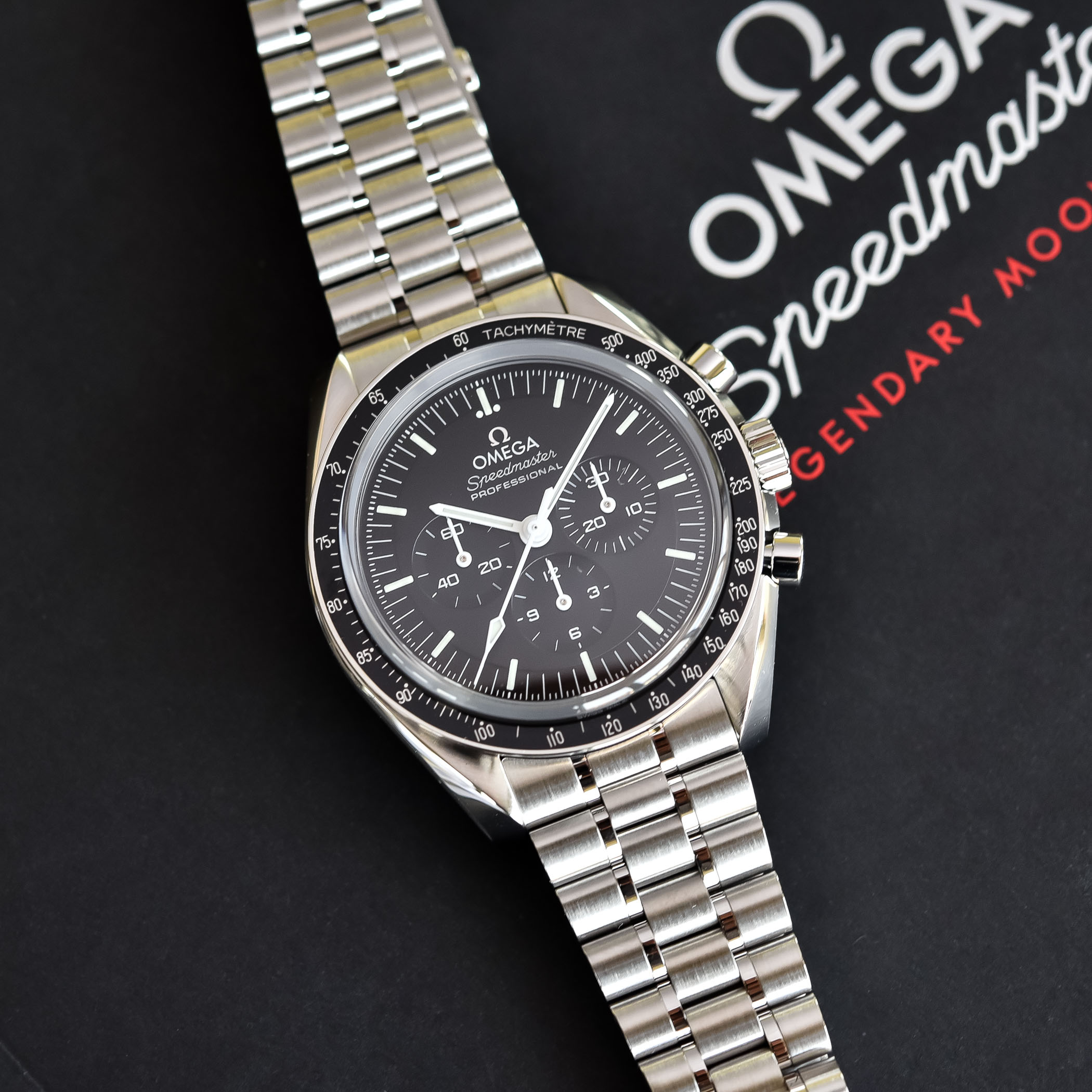

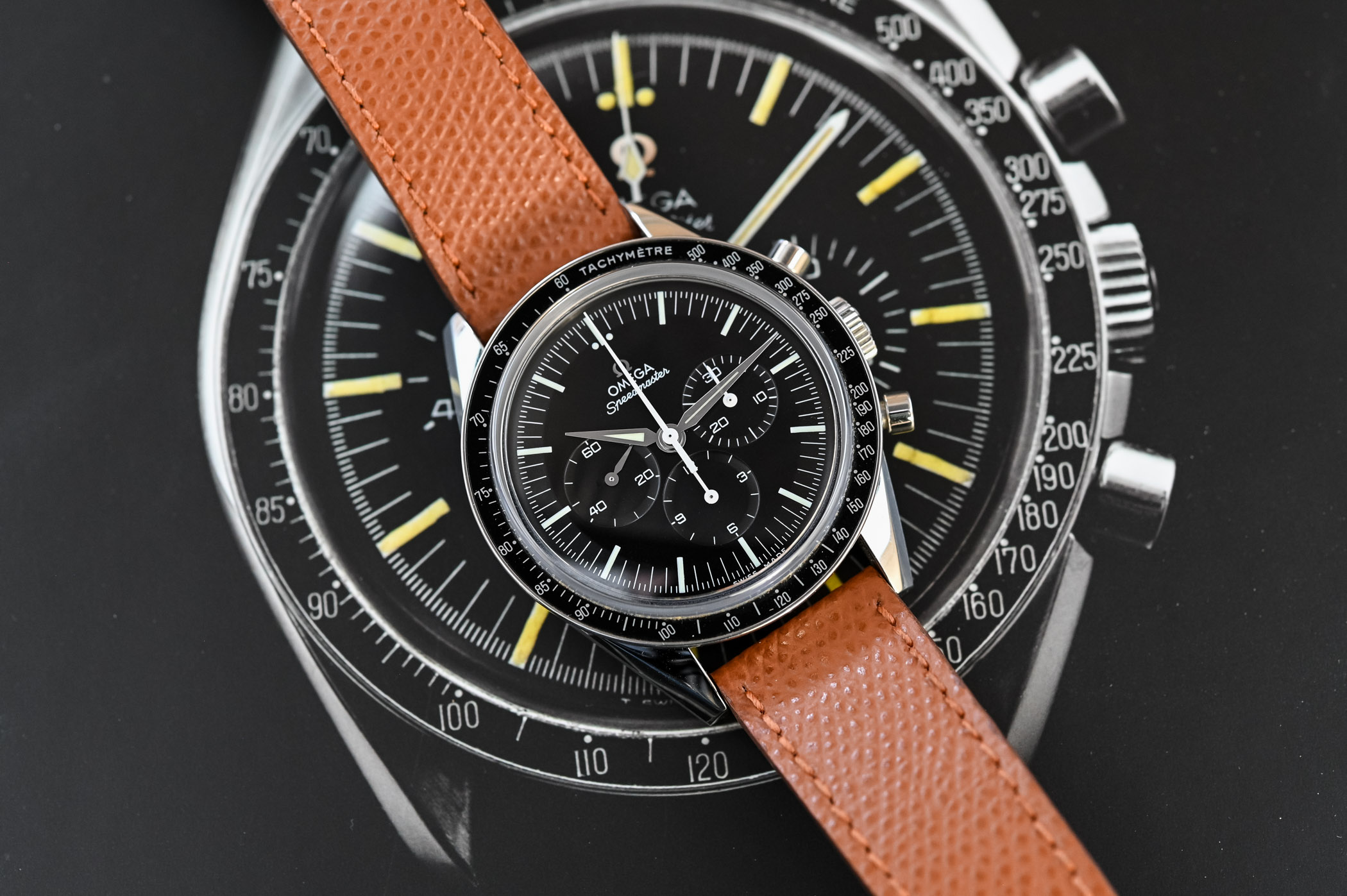



3 responses
Great write up about a great but under appreciated watch. I think your theory on why Omega has ended production of the FOIS is spot on. There could be a third reason too, the 60th anniversary of the Sigma 7/Mercury-Atlas 8 mission is in October 2022. Omega could be placing a reasonable gap between the FOIS and a Cal.3861 METAS CK2998 limited edition for that anniversary.
I was wondering where you got the 4 picture. I want to know what strap that is. I really like the asthetic of the strap.
The strap is available here https://shop.monochrome-watches.com/collections/calfskin-straps/products/monochrome-grained-calfskin-watch-strap-cognac